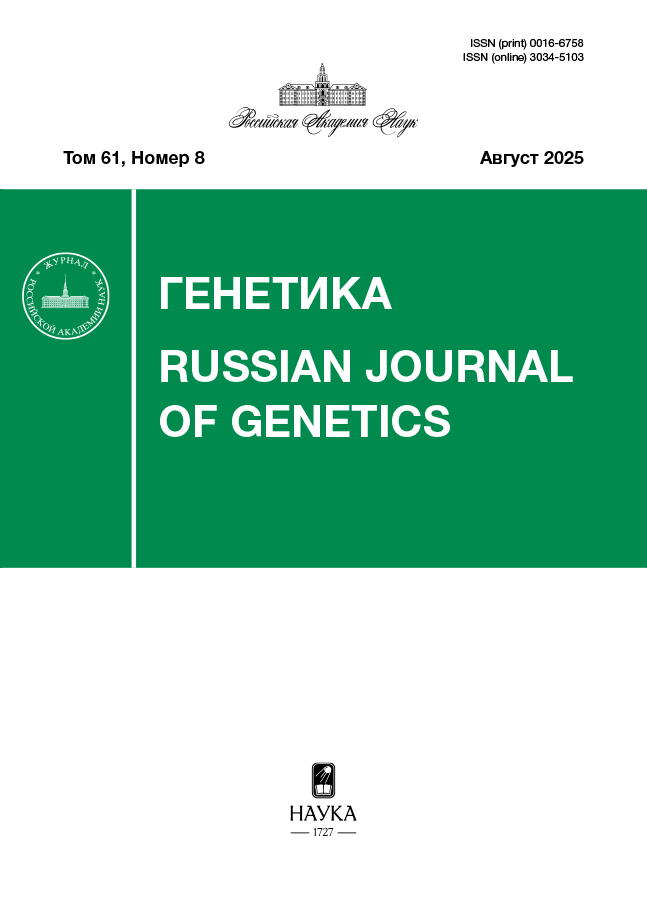Error Correction Occurring during DNA Fragment Synthesis using Endonuclease V from Thermotoga maritima
- Authors: Garagulya D.A.1, Evsyutina D.V.1, Rog I.S.1, Fisunov G.Y.1
-
Affiliations:
- Scientific Research Institute of Systems Biology and Medicine
- Issue: Vol 61, No 8 (2025)
- Pages: 3-9
- Section: МОЛЕКУЛЯРНАЯ ГЕНЕТИКА
- URL: https://ter-arkhiv.ru/0016-6758/article/view/693809
- DOI: https://doi.org/10.31857/S0016675825080012
- ID: 693809
Cite item
Abstract
One of the challenges in de novo DNA synthesis is the occurrence of errors. The number of errors associated with synthesis protocols limits the efficiency of obtaining synthetic DNA fragments, both on small and large scales. In this study, we propose a new rapid protocol for the synthesis of DNA fragments using the thermostable endonuclease V from Thermotoga maritima (Tma endonuclease) as an error-correction enzyme. The aim of the research is to develop a one-step error-correction method for de novo gene synthesis. The recombinant Tma endonuclease enzyme was obtained. To evaluate the efficiency of error correction using Tma endonuclease, the synthesis of the mTomato gene was performed using various protocols. The enzyme's efficiency was assessed visually based on the number of fluorescent colonies. To confirm the results, random samples of colonies were selected, and the assembled sequences were sequenced using the Sanger method. It was demonstrated that Tma endonuclease can be used in both the classical three-step and the rapid one-step error-correction protocols without loss of activity. It was also established that, with comparable accuracy of DNA fragment synthesis, the efficiency of Tma endonuclease is similar to that of the commercial enzyme Correctase (ThermoFisher). It was concluded that one-step error correction using endonuclease V accelerates the process of DNA fragment synthesis and error correction. By reducing the number of steps, this protocol is better suited for high-throughput DNA synthesis platforms compared to the classical protocol using non-thermostable enzymes.
Keywords
About the authors
D. A. Garagulya
Scientific Research Institute of Systems Biology and Medicine
Author for correspondence.
Email: garagulya_da@sysbiomed.ru
Moscow, 117246 Russia
D. V. Evsyutina
Scientific Research Institute of Systems Biology and Medicine
Email: garagulya_da@sysbiomed.ru
Moscow, 117246 Russia
I. S. Rog
Scientific Research Institute of Systems Biology and Medicine
Email: garagulya_da@sysbiomed.ru
Moscow, 117246 Russia
G. Yu. Fisunov
Scientific Research Institute of Systems Biology and Medicine
Email: garagulya_da@sysbiomed.ru
Moscow, 117246 Russia
References
- Fisunov G.Y., Semashko T.A., Evsyutina D.V. et al. Synthesis of the genome of bacteriophage N4 // Probl. Osobo Opas. Infekc. 2024. № 1. P. 182–191. https://doi.org/10.21055/0370-1069-2024-1-182-191
- Thi Nhu Thao T., Labroussaa F., Ebert N. et al. Rapid reconstruction of SARS-CoV-2 using a synthetic genomics platform // Nature. 2020. V. 582. № 7813. P. 561–565. https://doi.org/10.1038/s41586-020-2294-9
- Hutchison C.A., Chuang R.Y., Noskov V.N. et al. Design and synthesis of a minimal bacterial genome // Science. 2016. V. 351. № 6280. https://doi.org/10.1126/science.aad6253
- Gibson D.G., Benders G.A., Andrews-Pfannkoch C. et al. Complete chemical synthesis, assembly, and cloning of a Mycoplasma genitalium genome // Science. 2008. V. 29. № 319(5867). P. 1215–1220. https://doi.org/10.1126/science.1151721
- Gibson D.G., Glass J.I., Lartigue C. et al. Creation of a bacterial cell controlled by a chemically synthesized genome // Science. 2010. V. 329. № 5987. P. 52–56. https://doi.org/10.1126/science.1190719
- Semashko T.A., Fisunov G.Y., Tsoy E.A. et al. Modern approaches to de novo synthesis of extended DNA fragments: Аssembly of a wide repertoire of sequences // Acta Naturae. 2024. V. 16. № 1–60. P. 77–85. https://doi.org/10.32607/actanaturae.27362
- Desai N.A. and Shankar V. Single-strand-specific nucleases // FEMS Microbiol. Rev. 2003. V. 26. № 5. P. 457–491. https://doi.org/10.1111/j.1574-6976.2003.tb00626.x
- Yang B., Wen X., Kodali N.S. et al. Purification, clo-ning, and characterization of the CEL I nuclease // Biochemistry. 2000. V. 39. № 13. P. 3533–3541. https://doi.org/10.1021/bi992376z
- Smith J. and Modrich P. Removal of polymerase- produced mutant sequences from PCR products // Proc. Natl Acad. Sci. 1997. V. 94. № 13. P. 6847–6850. https://doi.org/10.1073/pnas.94.13.6847
- Ma S., Saaem I., and Tian J. Error correction in gene synthesis technology // Trends Biotechnol. 2012. V. 30. № 3. P. 47–54. https://doi.org/10.1016/j.tibtech.2011.10.002
- Sequeira A.F., Guerreiro C.I.P.D., Vincentelli R., Fon- tes C.M.G.A. T7 endonuclease I mediates error correction in artificial gene synthesis // Mol. Biotechnol., 2016. V. 58. № 8–9. P. 573–584. https://doi.org/10.1007/s12033-016-9957-7
- Huang J., Lu J., Barany F., Cao W. Multiple clea-vage activities of endonuclease V from Thermotoga maritima: Recognition and strand nicking mechanism // Biochemistry. 2001. V. 40. № 30. P. 8738–8748. https://doi.org/10.1021/bi010183h
- Semashko T.A., Fisunov G.Y., Tsoy E.A. et al. Modern approaches to de novo synthesis of extended DNA fragments: Assembly of a wide repertoire of sequences // Acta Naturae. 2024. V. 16. № 1–60. P. 77–85. https://doi.org/10.32607/actanaturae.27362
- Inoue H., Nojima H., and Okayama H. High efficiency transformation of Escherichia coli with plasmids // Gene. 1990. V. 30. № 96. P. 8–23. https://doi.org/10.1016/0378-1119(90)90336-p
- Geissmann Q. OpenCFU, a new free and open-source software to count cell colonies and other circular objects // PLoS One. 2013. V. 8. № 2. https://doi.org/10.1371/journal.pone.0054072
Supplementary files










